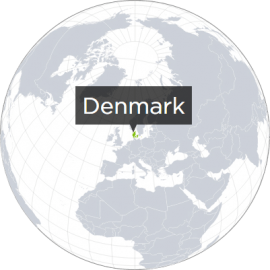This makes it an authoritative measure of human progress, offering a unique insight into how prosperity is forming and changing across nearly all countries of the world. For further information about our definition of holistic prosperity, please refer to the Defining Prosperity document, available for download on our website.
Index Methodology
The Legatum Prosperity Index™ is a framework that assesses countries on the promotion of their residents’ flourishing, reflecting both economic and social wellbeing. It captures the richness of a truly prosperous life, moving beyond traditional macroeconomic measurements of a nation’s prosperity, which rely solely on indicators of wealth such as average income per person (GDP per capita).
To cover both economic and social wellbeing, the Prosperity Index faces the challenge of finding a meaningful measure of success at the national level. We endeavour to create an Index that is methodologically sound. This is something that the Legatum Institute has sought to achieve with academic and analytical rigour over the past decade.
In developing the current Index, we worked with more than 100 academics and experts around the world with particular expertise in each of the pillars of prosperity to develop an appropriate taxonomy of discrete elements and supporting indicators which, when combined, accurately capture prosperity in the world.
The Prosperity Index captures the richness of a truly prosperous life, moving beyond traditional macroeconomic measurements of a nation's prosperity and redefining the way success is measured.
This has resulted in 12 pillars of prosperity split into 67 discrete policy focussed elements, and grouped into three domains essential to prosperity: Inclusive Societies, Open Economies, and Empowered People. We used 300 different indicators from over 70 different data sources to construct the Index.
For more information on the methodology please refer to the “Measuring Prosperity” document. To find out more about the sources and indicators used, please refer to our “Sources and Indicators” document.
Our Advisors
The Legatum Institute would like to thank the more than 100 advisors who have helped with the construction of the Prosperity Index and its component elements. You can find details of each of them in the downloadable PDFs below.
A diverse range of experts were engaged in the work, from academics, to researchers and policy leads from a wide variety of universities and other organisations. This broad collaboration enabled a comprehensive range of views to be captured and ensure the best outcome at each state of the review. In reaching a final position, the Legatum Institute synthesised all the expert views, and therefore the views expressed in materials and on this website are those of the Institute and do not necessarily reflect the individual views of the advisors.
Our Advisors
Advisors on the Inclusive Societies domain: Download PDF
Advisors on the Open Economies domain: Download PDF
Advisors on the Empowered People domain: Download PDF
Note on averages
When calculating scores for regions and the world as a whole, we take a population-weighted average score. This is because we want to capture the effect on individuals rather than countries. For example, if the scores of two countries change, then the more populous country has a greater effect on the global and regional scores than the less populous country.
Step by step

1 Selecting the indicators
With the help of our expert advisers, we created the optimum structure for the Prosperity Index, comprised of 12 pillars and underpinned by 67 policy-focused elements. We then identified hundreds of data variables to underpin each element of prosperity.
We identified the most relevant indicators within each element, driven by a set of selection criteria as well as advice from external experts on data and research around each pillar.
We used an extensive variety of publicly available data sources that gave comprehensive international coverage. This list was refined based on input from the experts in each pillar area, who advised on the reliability of data sources, alternative measures, and the credibility of indicators’ measurement.
Each of the 12 pillars captures a fundamental theme of prosperity, and each element captures a discrete policy area, which is measured by the indicators. Each pillar has between five and eight elements, and each element has between one and eight indicators.
2 Standardisation
The indicators in the Index are based on many different units of measurement, including numbers of events, years, percentages, and ordinal scales. The indicators need to be normalised for comparison between indicators and countries to be meaningful. We employ a distance to frontier approach for this task. The distance to frontier approach compares a country’s performance in an indicator with the value of the logical best case, as well as that of the logical worst case. As a result, the distance to frontier score captures a country’s relative position. This approach also enables us to compare Index scores over time.
3 Indicator and element weights
Each indicator is assigned a weight, indicating the level of importance within the element it has in affecting prosperity. Four weights are typically used: 0.5, 1, 1.5, or 2. Each indicator is weighted as 1 by default, but based on its significance to prosperity, this may be adjusted downwards or upwards accordingly. For example, an indicator with a weight of 2 means that it is twice as important in affecting the element as another indicator in that element with a weight of 1. Weights were determined by two factors, ordered by priority: (1) the relevance and significance of the indicator to prosperity, as informed by the academic literature and our experts’ opinions, and, to a lesser degree, (2) the statistical significance of the indicator to the economic and social wellbeing of a country, as measured by productive capacity and Cantril’s Ladder, respectively.
Analogously, elements are assigned weights based on their relative importance within each pillar, led by the same two factors above. At the element level, percentages rather than factors are used as weights, giving a greater range of possible weights than at the indicator level.
4 Element and Pillar Scores
Element scores are created using a weighted sum of indicator scores using the indicator weights assigned at the previous step. The same process is repeated to determine pillar scores with elements within the pillar, using the percentages discussed at the previous step. Countries were then ranked according to their scores in each pillar.
Domain scores are determined by assigning the same weight to each pillar and the overall Prosperity Index score is determined by assigning equal weight to each domain, as each pillar and domain is as important to prosperity as each other. The mean of the three domain scores yields an overall prosperity score for each country. The overall prosperity rankings are based on this score.
While the Index score provides an overall assessment of a country’s prosperity, each pillar (and element) score serves as a reliable guide to how that country is performing with respect to a particular foundation of prosperity.
Pillars

The Safety & Security pillar the degree to which war, conflict, terror, and crime have destabilised the security of individuals, both immediately and through longer lasting effects.

The Personal Freedom pillar measures progress towards basic legal rights, individual liberties, and social tolerance.

The Governance pillar measures the extent to which there are checks and restraints on power and whether governments operate effectively and without corruption.

The Social Capital pillar measures the strength of personal and social relationships, institutional trust, social norms, and civic participation in a country.

The Investment Environment pillar measures the extent to which investments are adequately protected and are readily accessible.

The Enterprise Conditions pillar measures the degree to which regulations enable businesses to start, compete, and expand.

The Infrastructure & Market Access pillar measures the quality of the infrastructure that enables trade, and distortions in the market for goods and services.

The Economic Quality pillar measures how well an economy is equipped to generate wealth sustainably and with the full engagement of the workforce.

The Living Conditions pillar measures the degree to which a reasonable quality of life is experienced by all, including material resources, shelter, basic services, and connectivity.

The Health pillar measures the extent to which people are healthy and have access to the necessary services to maintain good health, including health outcomes, health systems, illness and risk factors, and mortality rates.

The Education pillar measures enrolment, outcomes, and quality across four stages of education (pre-primary, primary, secondary, and tertiary education), as well as the skills in the adult population.

The Natural Environment pillar measures the aspects of the physical environment that have a direct effect on people in their daily lives and changes that might impact the prosperity of future generations.

